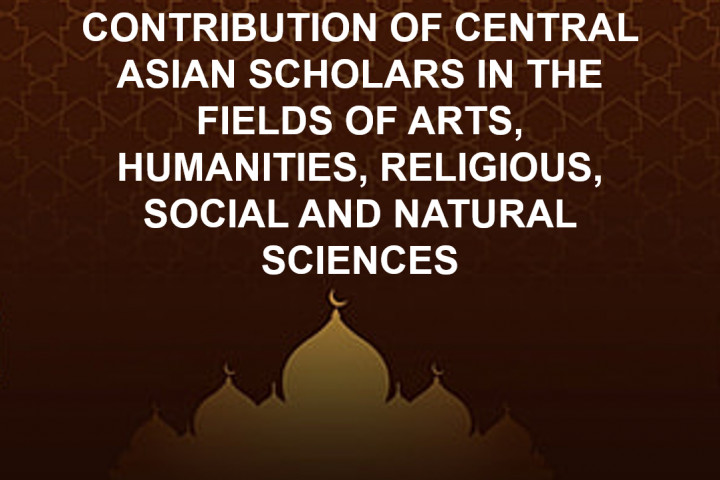
CONTRIBUTION OF CENTRAL ASIAN SCHOLARS IN THE FIELDS OF ARTS, HUMANITIES, RELIGIOUS, SOCIAL AND NATURAL SCIENCES
The UNESCO 1978 study on the history of civilization of Central Asia defnes Central Asia as including Transoxiana which the Arabs called Maawr-un-Nahar (that side of the river Oxus) i.e. fve former Soviet Central Asian States, Xingjian region of China, Pakistan and Afghanistan. However this particular research work mainly refers to Maawr-un-Nahar as Central Asia. A thousand years back the Central Asians were gaining, creating, gathering, vivisecting and disseminating knowledge. They believed in the unity of knowledge as has been acknowledged in the postmodern era as inter-disciplinarity and post-disciplinarity approaches. Their contributions in the felds of science and technology, religious and social sciences and arts, architecture and literature provided base to the Western world to further flourish on. Al-Farabi known as Aristotle II introduced the works of Aristotle and other Greek works to the West particularly to Europe. Similarly Ibne-Sina, Al-Beruni, Al-Khwarizmi, Ismail Bukhari, Mohammd Bin Ahmad, Ibnul Haisam, Ulugh Beg, Omar Khayam, Abul Wafa, Al-Khazini, Rumi, Al-Kashi, Ali Sher Nawai and the list is long whose contributions to the felds of scientifc enterprise provided foundation to the rest of the World for the rest of developments since the “Golden Age” i.e. Ninth Century AD to Fifteenth Century AD. Their knowledge of cognitive, perspective, experimental, intuitive, observatory, explicit and implicit or tacit were so intensely interwoven like a seven color Rambo in the sky. They were fed from the primeval source of inspiration through emanation a source for which Goethe yearned almost another thousand years later in his Hegire. The European renaissance would have been impossible without the contribution of Central Asian Scholars and scientists. The Europeans could not get these works from the Greeks directly mainly due to their mutual suspicions of creed and also might be due to the breadth of Mediterranean Sea. The Central Asian Scientists not only translated and researched the Greek works rather they signifcantly improved and added new knowledge. They were studying, thinking, searching and re-searching to create, explore and discover the nature to beneft the humanity.
The Central Asian Scholars developed the procedure for testing knowledge empirically and logically. Experimental Character was the basic characteristic feature in the applied sciences and apparatus development. So the region gave birth to great historical fgures in Medicine, Botany, Mathematics, Astronomy, Literature, Linguistics, Philosophy, Religious, Architecture, Algebra and many other disciplines. Main reasons for the production of genius scholars and scientists by this region (Maawr-un-Nahar) have been identifed as: frst, the region was a major transit trade route that helped spreading ideas and knowledge along with the wealth in the region. Samarkand, Bukhara, Khiva, Herat and Balkh were great seats of learning, intellectual inquiry and artistic creations during the medieval ages. Secondly the region was home to great Empires that helped and empowered accumulation of knowledge and thirdly the region totally remained a great mix of religions. Yet another factor or reason can be the fertile soil, healthy water and pleasant climate of the region that not only produce all kinds of crops, fruits and vegetables but also produced great Scientists and Statesmen in the history. The above mentioned cities turned Central Asia into great civilization i.e. a culture (way of living) consolidated on the basis of lore and learning and science and technology over a period of time. The Central Asians contributed solidly to every feld of life from the use of clay, metal, cotton, tobacco, coca, maize and grounded net, vanilla and pepper, observations, swell and calendar and a sound political governance and revenue systems to astronomy, algorithm, algebra, force of gravity, industrial processes and manufacturing and hydraulic engineering to Muslim Jurisprudence i.e. Fiqah that all left indelible marks on human progress and prosperity. These scholars had complete command over religious as well as secular education and knowledge. The Madrassas were not only providing religious education rather those were also imparting secular and contemporary education in all walks of life. Unfortunately that is not the case with the Madrassas in current day Pakistan, Afghanistan and India which only focuses on religious education and their students cannot compete for jobs in open market with the students of colleges and universities.
The foremost building projects in Samarkand were the Madrassa of Muhammad Sultan (Taomus Gland) and Ulagh Beg Madrassa in Registan square. Central Asia celebrated great Scholars with outstanding contribution to the understanding and interpretation of the Holy Quran and Hadith, AL- Bukhari and Al-Tirmidhi, Ahadees and Muslim jurisprudence i.e. Fiqah. The production of six most authentic books on Aahaadees is unparallel contribution to the religion by the Central Asia Scholars. The Central Asian Scholars have equally contributed to physics, hydraulic engineering, manufacturing and industrial process. The commentary on gravity and projectile motion of Al-Farabi and Ibn-e-Seena has addressed the weakest points of Aristotle. (I) Similarly, Al Beruni has critically examined hylomorphism, the vacuum denial, natural place of objects in the sublunary region and so on. IbnulHaisam got a great name who through his book “Kitabul Manazir” revolutionized the process of vision and psychology of visual perception. The contributions in architecture and construction engineering also led to the development of irrigation system to increase yield per hectare and diversify crops pattern. This work briefly discusses and highlights the Central Asia Scholars and their contributions to various branches of knowledge. The methodology is qualitative in nature using the rich sources of the Library of Area Study Centre for Central Asian Studies at University of Peshawar, Peshawar, Pakistan, which is one of the richest libraries in the region in terms of material on Central Asia.
Prof. SHABIR AHMAD KHAN
Ph.D in Central Asian Studies
Director, Area Study Centre
(Russia, China & Central Asia)
University of Peshawar, Peshawar, Pakistan
 УЗ
УЗ
 РУ
РУ
 EN
EN
 العربية
العربية
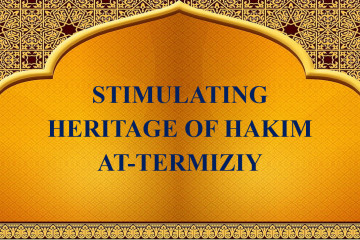
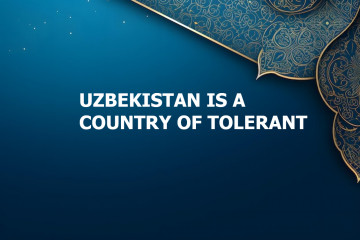
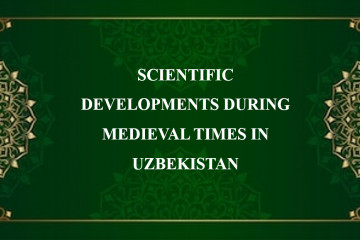
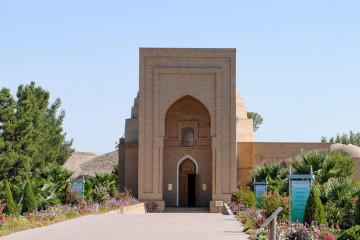
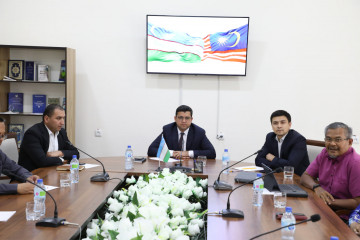

Оставить комментарий